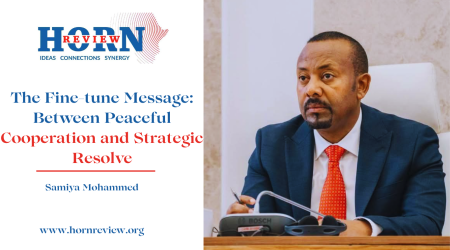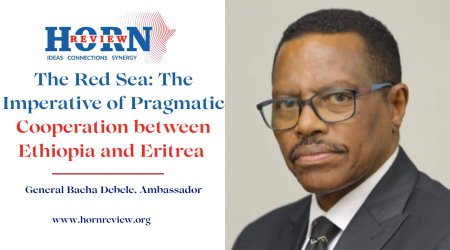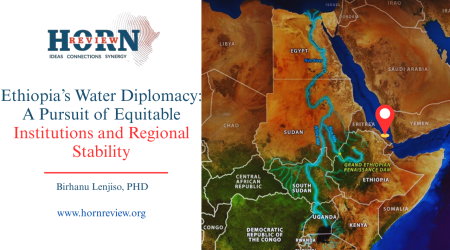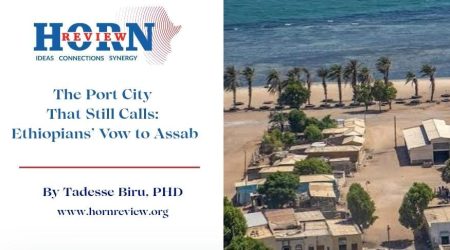
5
Nov
Ethiopia’s Peacekeeping Architect for A Peaceful Horn
Ethiopia’s peacekeeping venture in the Horn of Africa is a strong testament to the power of long-term and strategic intervention in conflict zones. Extending beyond the classical definition of intervention by force, Ethiopia’s four-decade endeavor is a multilateral tool of regional diplomacy, economic interdependence, and international imaging. This new vision sees peacekeeping as a multi-purpose instrument not just for conflict resolution but also for political reconciliation, economic development, and international status, a prized asset in one of the world’s most unstable geopolitics. Born with its first deployment under the Korean War during the early 1950s, the Ethiopia peacekeeping mission is an incremental transition from a national security interest to an acting regional balancer.
The Ethiopian National Defense Force’s (ENDF) most significant peacekeeping contributions in the Horn revolve around the prolonged engagements in Somalia under African Union missions such as AMISOM and ATMIS. Ethiopian forces were pivotal in countering Al-Shabaab’s insurgency, but their role transcended combat: they became agents of state-building by training Somali security personnel, facilitating humanitarian aid delivery, and supporting fragile governance structures. Ethiopia’s mission in Somalia, often under intense pressure and sacrifice, has underscored its neighborhood policy: peacekeeping as an active policy to shape a stable neighborhood where political negotiations and economic cooperation are possible rather than passive crisis management.
This quiet approach redefines peacekeeping as a foundation for economic integration in the Horn of Africa. Peacekeeping-fostered stability underpins large-scale infrastructure developments and trade pacts at the center of Ethiopia’s vision of regional interdependence. For a landlocked country that relies on access to ports, peacekeeping-fostered stability in neighboring Somalia and Somaliland directly facilitates maritime trade routes instrumental to economic development. In addition, Ethiopia uses its peacekeeping operations to establish civil society construction, governance reform, and investments in human capital among partner nations, thereby promoting interconnectedness and interdependence.
Ethiopia’s historical role as one of the world’s largest contributors to global peacekeeping missions is not merely a logistical necessity but a diplomacy tactic that fundamentally reshapes the country’s international image. By deploying tens of thousands of troops under the blue helmets of the UN and the flags of the AU,Ethiopia is in effect exercising a powerful form of military diplomacy that remakes its perceived identity on the global stage.
This consistent, high-level engagement diplomatically diverts the world’s conversation away from domestic vulnerabilities or historic narratives of conflict and poverty. Instead, it proactively repositions Ethiopia as a cherished security partner, a stable, capable, and professional force dedicated to maintaining regional and continental stability. This record as a consistent net exporter of security, particularly in the unstable Horn of Africa, is a vital form of soft power that underpins strategic relationships with great world powers, obtains a louder voice within multilateral institutions and legitimizes its regional leadership ambitions.
The success of this “blue helmet diplomacy” in image-enhancement is also supported by below-the-horizon performance and side benefits of the posted forces. The model discipline and combat capabilities of Ethiopian peacekeepers in missions under adverse field conditions convey a reputation for institutional toughness that casts a reflection of credit on the state apparatus as a whole. This demonstration of strength and compassion specifically works against negative media images and creates goodwill among host nations and the broader international community. Ethiopia consequently converts national military capabilities into an effective diplomatic capital, achieving double foreign policy goals of attaining regional security with simultaneous reputational capital to increase political leverage and gain greater international engagement.
This intersection of security and development highlights a paradigm where peacekeeping is not solely a military venture but a comprehensive strategy to nurture sustainable political economies. Crucially, Ethiopia’s peacekeeping experience illuminates a distinct avenue for positive international image building. As Ethiopia dispatches significant contingents of trained, disciplined, and humanitarian-focused troops, it cultivates an image of a responsible, progressive nation dedicated to global and regional peace.
Such image-making extends Ethiopia’s diplomatic reach, making possible collaborations with multinational organizations, development agencies, and global powers. The forceful push for gender inclusiveness and humanitarian assistance in Ethiopian peacekeeping forces complements such an image, presenting the country as a progressive leader that subscribes to modern peacebuilding standards.
Comparative African context further strengthens this understanding. Post-apartheid peacekeeping by South Africa, with its purview from fragile states to border conflicts, puts the country forth as a regional power championing African renaissance, enhancing its diplomatic stature and economic interests. Rwanda’s extensive UN peacekeeping missions also reinforce how even minor nations can project their global status through bold, successful deployments. Rwanda’s peacekeepers are widely regarded as professional and dedicated regardless of the hostile climates they are working in, further enhancing the country’s global image and attracting diplomatic favor and investment. The above instances show an increasing trend where peacekeeping has both twin on-the-field stability and off-the-pitch image diplomacy roles, both enhancing national branding and soft power simultaneously.
The Horn of Africa today a geo-strategic laboratory in which the diverse benefits of peacekeeping play out majestically against an optic of ethnic rivalry, political fragmentation, terrorism, and external power competition. Ethiopia’s steady peacekeeping commitment reflects its vision for a preventive action-oriented collective security order of regional leadership and cooperation with international friends. Such architecture is necessary in order to lock in cycles of violence, encourage belligerent actors to dialogue, and establish economic linkages that bind the region across ethno-political fault lines. Without such architecture, the Horn risks becoming increasingly fragmented and vulnerable to manipulation by external geopolitical actors furthering short-term agendas at the expense of regional cohesion.
Ethiopia’s peacekeeping success is an exemplary strategic national resource with military might, diplomatic sophistication, economic prudence, and normative imagination. Its peacekeeping record is not a static history of the past but an operational model of how countries on the war-torn periphery can make peacekeeping work as tools of overall advancement. It reiterates that peacekeeping is not an outer periphery endeavor but at the center of Ethiopia’s national project and diplomatic effort, promoting a robust regional order built on peace, common prosperity, and respect. For the Horn of Africa, this offers a brighter future where peacekeeping moves beyond tactical imperative to a powerful force reconfiguring the political economy and security environment announcing the beginning of.
By Rebecca Mulugeta, Researcher, Horn Review










